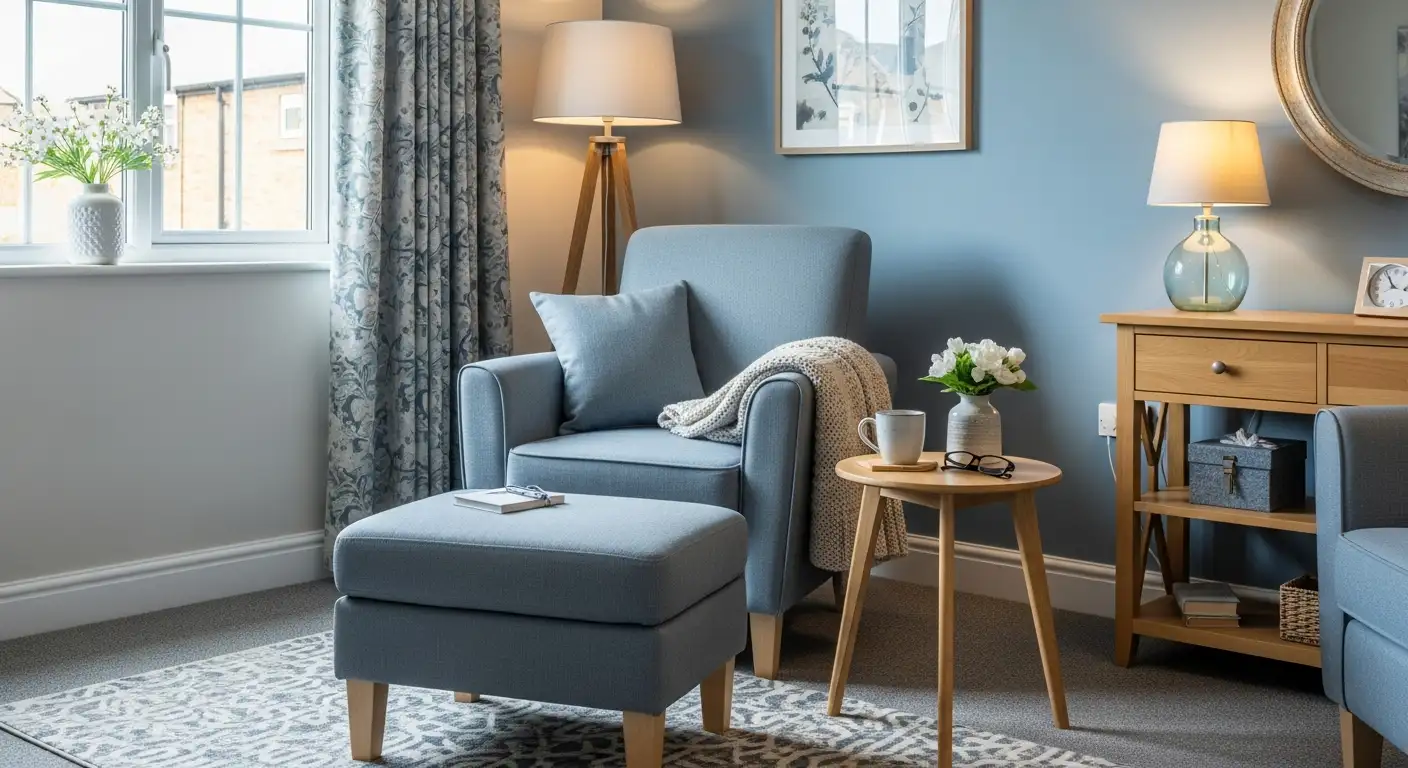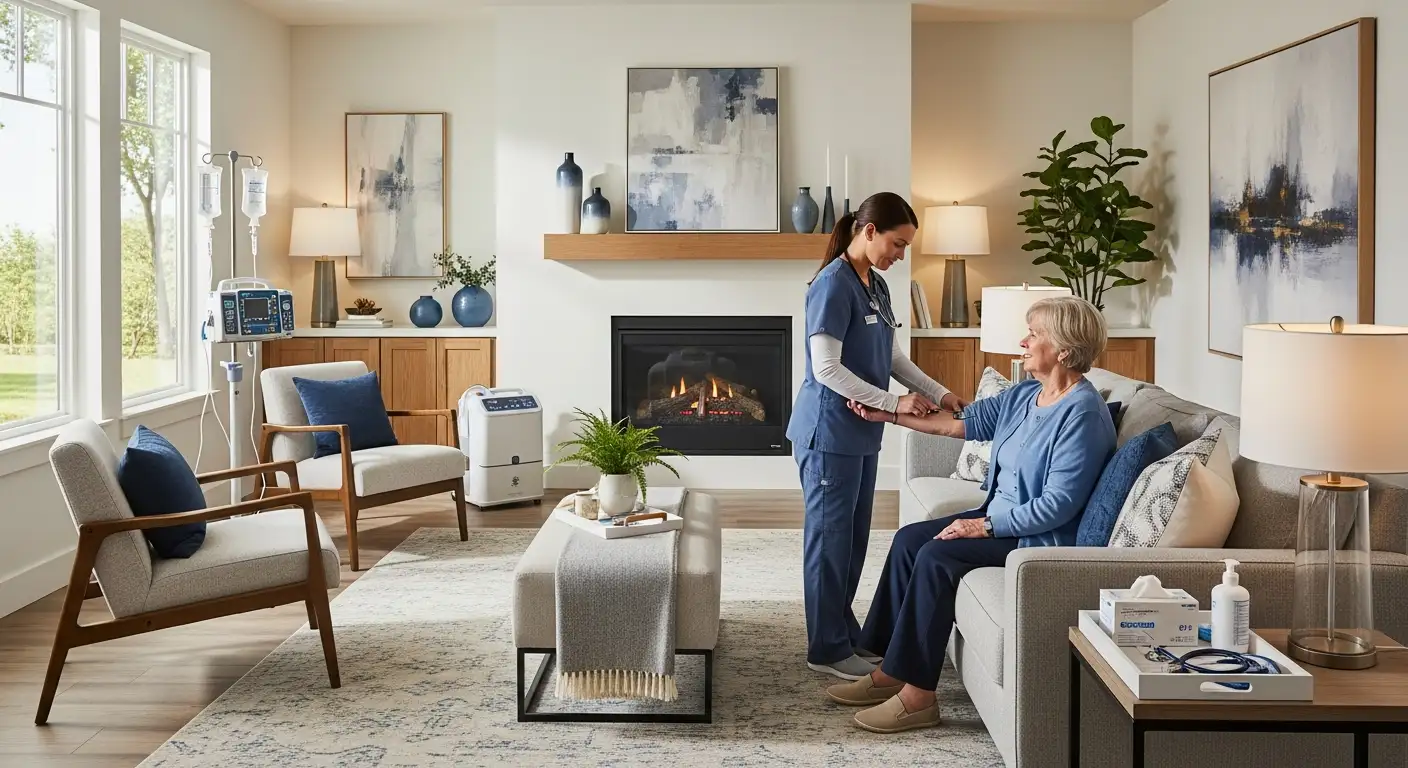The Importance of Bath Safety for the Elderly
When it comes to elderly care, prioritizing bath safety is of utmost importance. The bathroom can often present numerous risks for seniors, making it essential to take appropriate safety measures.

Understanding the Risks
The bathroom can be a hazardous place for the elderly due to a variety of factors. Slippery surfaces, inadequate support, and poor lighting can all contribute to the risk of falls. According to the Centers for Disease Control and Prevention, one in four Americans aged 65 and over falls each year, and the bathroom is commonly the place where these accidents occur.

Understanding these risks is the first step in creating a safer bathroom environment for the elderly.
The Role of Bath Safety in Elderly Care
Bath safety plays a crucial role in elderly care as it not only helps prevent accidents but also promotes independence and improves the quality of life for seniors. By implementing safety measures such as non-slip mats, grab bars, and adequate lighting, the elderly can maintain their privacy and dignity while reducing the risk of injuries.
Moreover, bath safety measures can provide peace of mind for both the elderly and their caregivers. Knowing that the bathroom is equipped with the necessary safety features can alleviate worries and allow seniors to carry out their daily routines with confidence and ease.
In summary, understanding the risks associated with bathroom use and recognizing the vital role of bath safety measures in elderly care are key to ensuring a safe and comfortable environment for the elderly. As a part of comprehensive elderly care, bath safety cannot be overlooked.
Common Bathroom Hazards for the Elderly
In the context of bath safety for the elderly, it's crucial to identify the common hazards in the bathroom. These hazards can increase the risk of accidents, leading to severe injuries. The primary obstacles include slippery surfaces, inadequate support, and poor lighting.
Slippery Surfaces
Bathrooms are prone to becoming slippery due to water and soap. For the elderly, a small slip can result in significant injuries, such as fractures or head trauma. Wet floors, damp bath mats, and slick tiles around the bathtub or shower area are typical slippery surfaces that pose a threat to the elderly.
Inadequate Support
A lack of proper support in the bathroom is another major hazard for the elderly. Without sufficient support, the risk of losing balance and falling increases, especially during activities like getting in and out of the bathtub or standing from a seated position. Bathrooms often lack the necessary grab bars or railings required to provide the needed support for these activities.
Poor Lighting
Poor lighting can also be a significant hazard in the bathroom for the elderly. Dimly lit areas can obscure vision, making it difficult to see wet spots or objects on the floor. It also makes it harder to navigate around the bathroom, especially during the night or for those with poor vision.
Addressing these common hazards is an important step in ensuring bath safety for the elderly. By taking preventative measures, it's possible to create a safer environment that reduces the risk of accidents and injuries. In the following sections, we'll explore various safety measures, including non-slip mats and decals, grab bars and railings, and adequate lighting solutions.
Essential Bath Safety Measures
When it comes to bath safety for the elderly, several measures can be put in place to ensure a safer and more comfortable bathing experience. These include the use of non-slip mats and decals, grab bars and railings, and shower seats and bath lifts.
Non-Slip Mats and Decals
Slippery surfaces are one of the leading causes of bathroom accidents among the elderly. Therefore, the use of non-slip mats and decals can significantly enhance bath safety. Non-slip mats provide a stable surface, reducing the risk of slipping when stepping in and out of the bathtub or shower. They are typically made from rubber or vinyl and feature suction cups on the bottom for secure placement.
Decals, on the other hand, are adhesive stickers that can be applied directly to the bathtub or shower floor. They provide extra grip and can be particularly helpful for those who prefer not to use a full mat. Make sure that non-slip mats or decals are in place and secure before each use.
Grab Bars and Railings
Grab bars and railings are another essential safety measure. They provide support for the elderly when transitioning in and out of the bathtub or shower, reducing the risk of falls. These fixtures should be installed where they can be easily reached, such as near the bathtub or shower entrance and next to the toilet.
It's crucial that grab bars and railings are installed properly to ensure they can support the person's weight. They should be securely attached to the wall studs, not just the bathroom wall surface.
Shower Seats and Bath Lifts
For elderly individuals who may have difficulty standing for extended periods, shower seats and bath lifts can be a beneficial addition to the bathroom.
Shower seats allow the person to sit while showering, reducing fatigue and the risk of falls. They come in various styles, including freestanding models and ones that attach to the shower wall. Some also feature backrests and armrests for added support.
Bath lifts, on the other hand, help individuals get in and out of the bathtub. They work by gently lowering and raising the person into and out of the bath, reducing the need for strenuous physical effort.
By implementing these bath safety measures, one can significantly enhance the safety and comfort of elderly individuals in the bathroom, promoting independence and improving their overall quality of life.
Lighting and Visibility Improvements
A significant component of bath safety for the elderly is lighting and visibility. By enhancing these elements, potential hazards can be minimized, making the bathroom a safer space for the elderly.
Adequate Lighting Solutions
Effective lighting in a bathroom can help prevent slips, trips, and falls by improving visibility. It's crucial to ensure that the bathroom, particularly critical areas like the shower or bath and toilet, are well-lit.
It may be beneficial to install bright overhead lights that illuminate the entire room. Additionally, consider nightlights for nighttime use, as they can guide the way to the bathroom without being overly bright or disruptive to sleep.
Lastly, task lighting can be helpful in areas where precision is needed, such as near the mirror. It's also crucial to ensure that light switches are easily accessible and simple to operate.
High-Contrast Color Schemes
Another effective strategy for enhancing visibility is the use of high-contrast color schemes in the bathroom. For individuals with vision impairments, a color contrast can help distinguish different areas and items in the bathroom.
For instance, a toilet seat in a color that contrasts with the toilet bowl and the surrounding floor can be more easily seen. Similarly, a shower mat or grab bar in a contrasting color can stand out, making it easier to locate and use.
In a high-contrast color scheme, it's important to consider the elderly person's color perception. Colors that provide a strong contrast for most people are black and white, but other combinations can also work well depending on individual vision and preferences.
By implementing appropriate lighting solutions and high-contrast color schemes, bath safety for elderly individuals can be significantly improved. These measures can enhance visibility, promote ease of use, and ultimately contribute to a safer and more comfortable bathroom environment.
Other Safety Considerations
Beyond the primary measures like non-slip mats, grab bars, and shower seats, there are other considerations that can significantly enhance bath safety for elderly individuals. These include water temperature control, easy-to-use fixtures, and emergency response systems.
Water Temperature Control
One important factor in ensuring bath safety for elderly individuals is maintaining the right water temperature. Older adults may have difficulty sensing temperature changes, which increases the risk of accidental burns. Ensuring the water heater is set to a safe temperature (generally no higher than 120°F) can prevent such accidents.
Additionally, consider installing thermostatic mixing valves. These devices mix hot and cold water to a pre-set temperature before it reaches the faucet, reducing the risk of sudden temperature changes.
Easy-to-Use Fixtures
Elderly individuals may struggle with traditional bathroom fixtures due to arthritis or other mobility issues. Consider replacing small, hard-to-turn knobs with lever-style handles, which are easier to operate.
Similarly, opt for a handheld showerhead. It can be maneuvered more easily, offering better control during bathing. For the toilet, raised seats or seat extenders can make it easier to sit down and stand up, reducing strain and the risk of falls.
Emergency Response Systems
Despite best efforts to ensure bath safety for elderly individuals, accidents can still happen. An emergency response system in the bathroom can provide peace of mind.
These systems usually come in the form of a button or pull-cord that can be easily reached from the floor. If an elderly individual falls or requires assistance, they can use the system to alert a caregiver or emergency services.
Incorporating these additional safety measures can go a long way in enhancing the overall safety and comfort of the bathroom for elderly individuals. By addressing these areas, one can further reduce the risk of accidents, improve independence, and provide reassurance that help is at hand if needed.
The Impact of Bath Safety Measures
Implementing bath safety measures can have a significant positive impact on the lives of elderly individuals. From fostering independence to minimizing injury risks, these measures play a crucial role in enhancing the overall quality of life for seniors.
Increased Independence
One of the primary benefits of utilizing bath safety measures is the potential to increase independence among the elderly. By providing stable support and ensuring a safer environment, seniors can carry out daily bathing routines without the constant need for assistance. This can boost their confidence and promote a sense of self-reliance, contributing to their overall mental well-being.

Reduced Risk of Injury
Another significant impact of bath safety measures is the reduction in injury risk. The bathroom can pose various dangers to the elderly, including slippery surfaces and inadequate support. By implementing safety measures, such as non-slip mats, adequate lighting, and grab bars, the likelihood of accidents such as slips and falls can be significantly reduced.

Improved Quality of Life
Lastly, applying bath safety measures can lead to an improved quality of life for elderly individuals. A safer and more secure bathroom environment not only reduces stress but also allows seniors to maintain their hygiene and personal care routines. This, in turn, can enhance their self-esteem and overall happiness.

Regular Maintenance of Bathroom Safety Features
In addition to implementing bath safety measures, it's crucial to regularly maintain these features to ensure their effectiveness. Over time, non-slip mats and decals can lose their grip, grab bars can become loose, and lighting fixtures can burn out.
By conducting routine inspections and maintenance, potential hazards can be identified and addressed promptly. This not only ensures that the bathroom remains a safe space for elderly individuals but also extends the lifespan of these safety features.
Some ways to maintain bathroom safety features include checking for loose or damaged grab bars and railings, replacing non-slip mats or decals when they show signs of wear and tear, and ensuring that adequate lighting is always available.
Overall, regular maintenance is an essential component in promoting bath safety for the elderly. By staying on top of upkeep tasks, caregivers can provide a safer environment for seniors while also prolonging the life of these valuable safety measures.
Motion Sensor Lights for Nighttime Safety
Nighttime bathroom visits can be particularly hazardous for elderly individuals. The risk of tripping and falling is higher due to reduced visibility and grogginess. One way to address this issue is by installing motion sensor lights in the bathroom.
Motion sensor lights turn on automatically when they detect movement, providing instant illumination when needed. This eliminates the need to fumble for light switches or turn on bright overhead lights that can disrupt sleep.
When selecting motion sensor lights, it's important to choose ones that are appropriate for the size of the bathroom and provide adequate coverage. It's also crucial to ensure that they're positioned in a way that won't cause glare or shadows that could obstruct vision.
By incorporating motion sensor lights into the bathroom design, caregivers can significantly enhance nighttime safety for elderly individuals. These lights provide instant illumination, reducing the risk of falls and promoting overall well-being.
Conclusion
The implementation of bath safety measures can significantly enhance the lifestyle of elderly individuals, promoting independence, reducing injury risks, and improving their overall quality of life.
Bath safety for the elderly is a crucial consideration that requires attention and action. By implementing appropriate safety measures, such as non-slip mats, grab bars, adequate lighting, and motion sensor lights, caregivers can significantly enhance the safety and comfort of seniors in the bathroom.
Moreover, regular maintenance of these features ensures their effectiveness and longevity, providing a safer environment for older adults. These measures not only reduce injury risks but also promote independence and improve overall quality of life.
Prioritizing bath safety for elderly individuals is a critical aspect of caregiving that can have far-reaching positive impacts. By taking proactive steps to create a safer bathroom environment, caregivers can provide peace of mind and foster greater well-being among seniors.
Sources
- https://www.ncoa.org/article/home-safety-tips-for-seniors/
- https://www.cdc.gov/steadi/pdf/STEADI-Brochure-StayIndependent508.pdf
- https://www.aarp.org/caregiving/home-care/info-2019/bathroom-safety.html
- https://www.seniorliving.org/safety/bathrooms/
- https://www.caregiver.org/taking-care-bathrooms-practical-guide-family-caregivers



